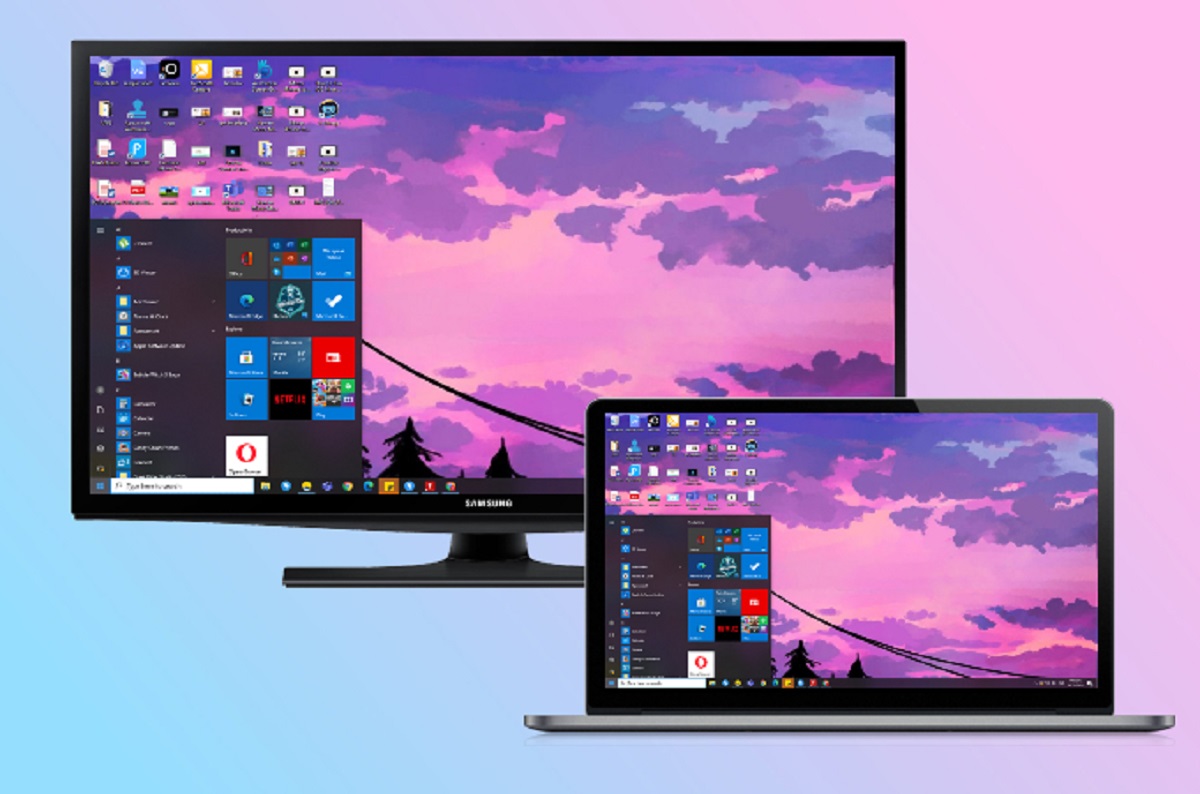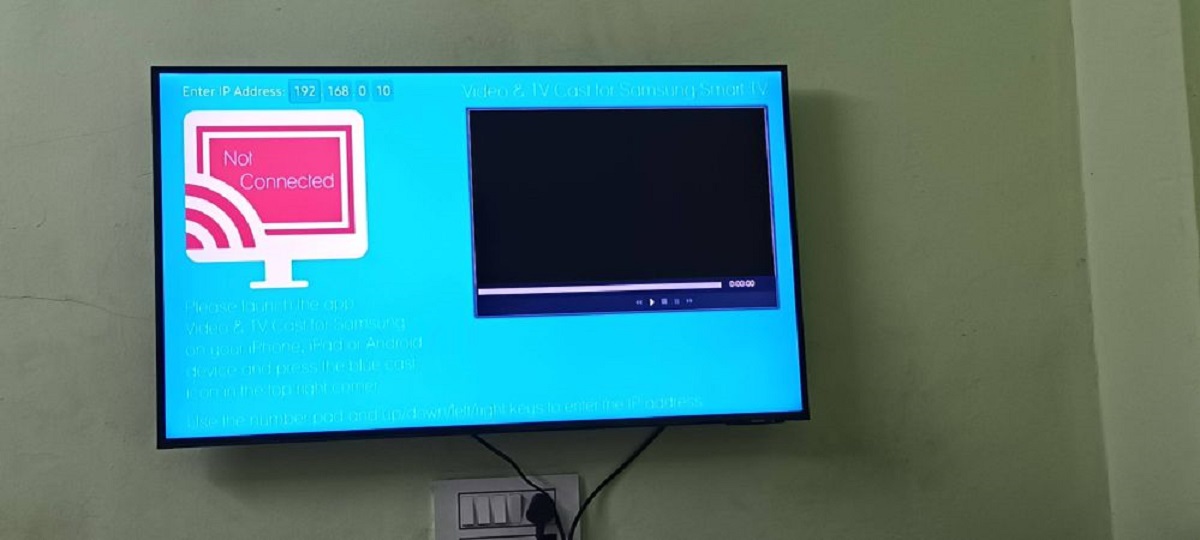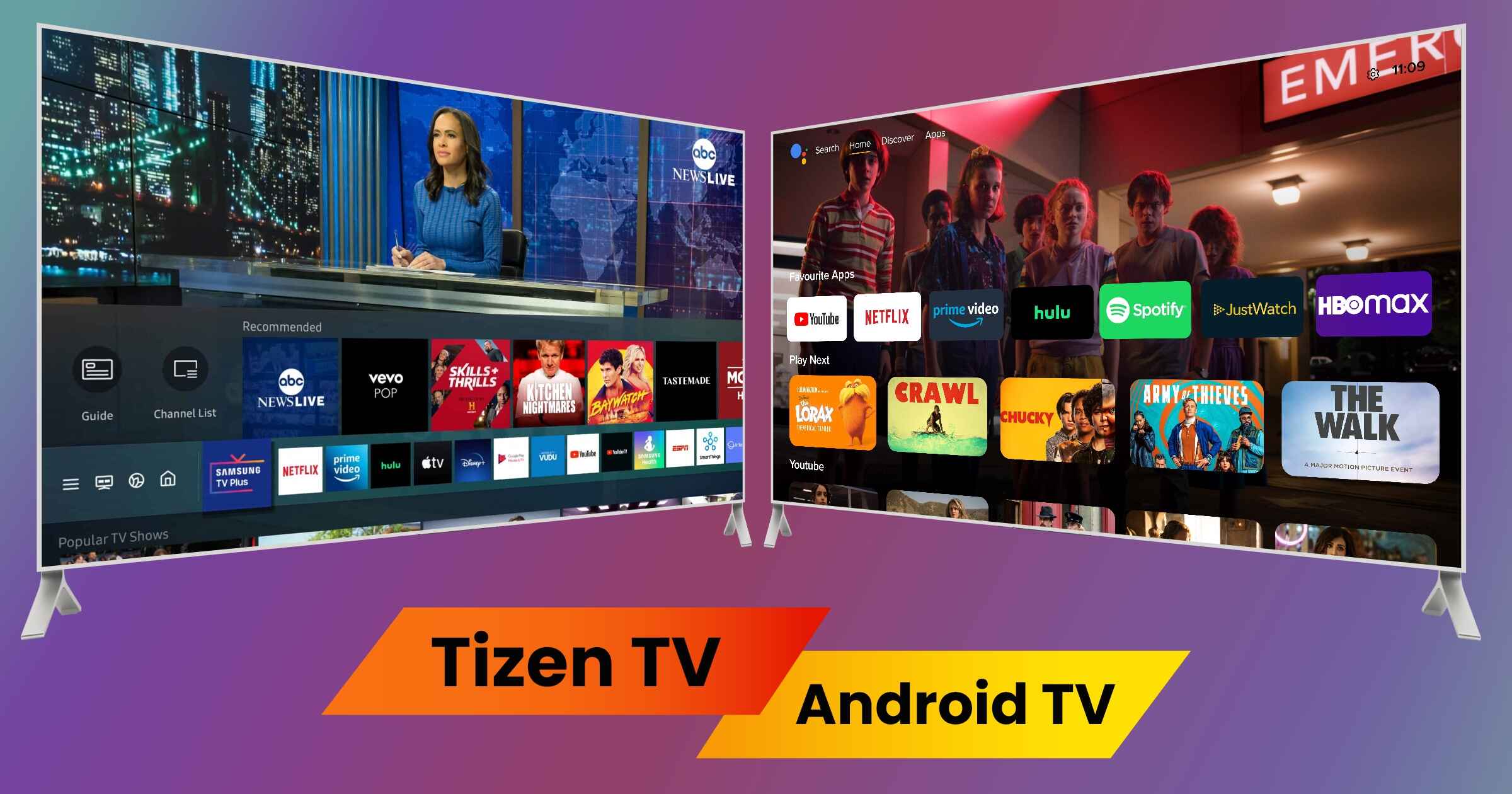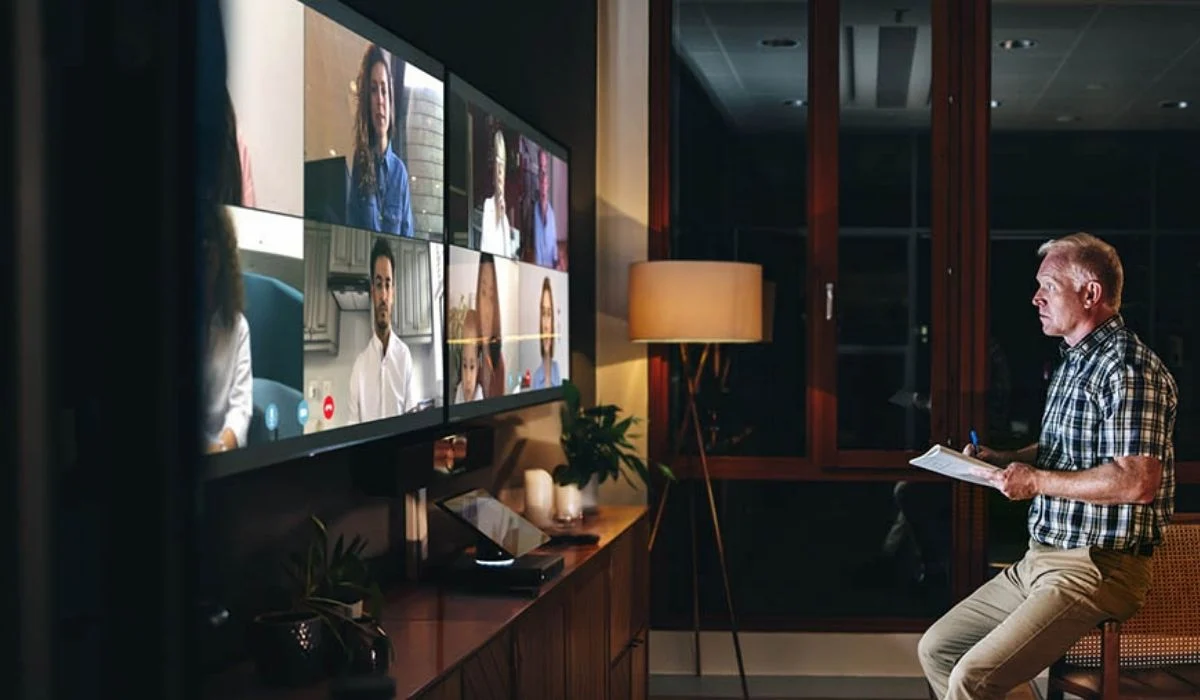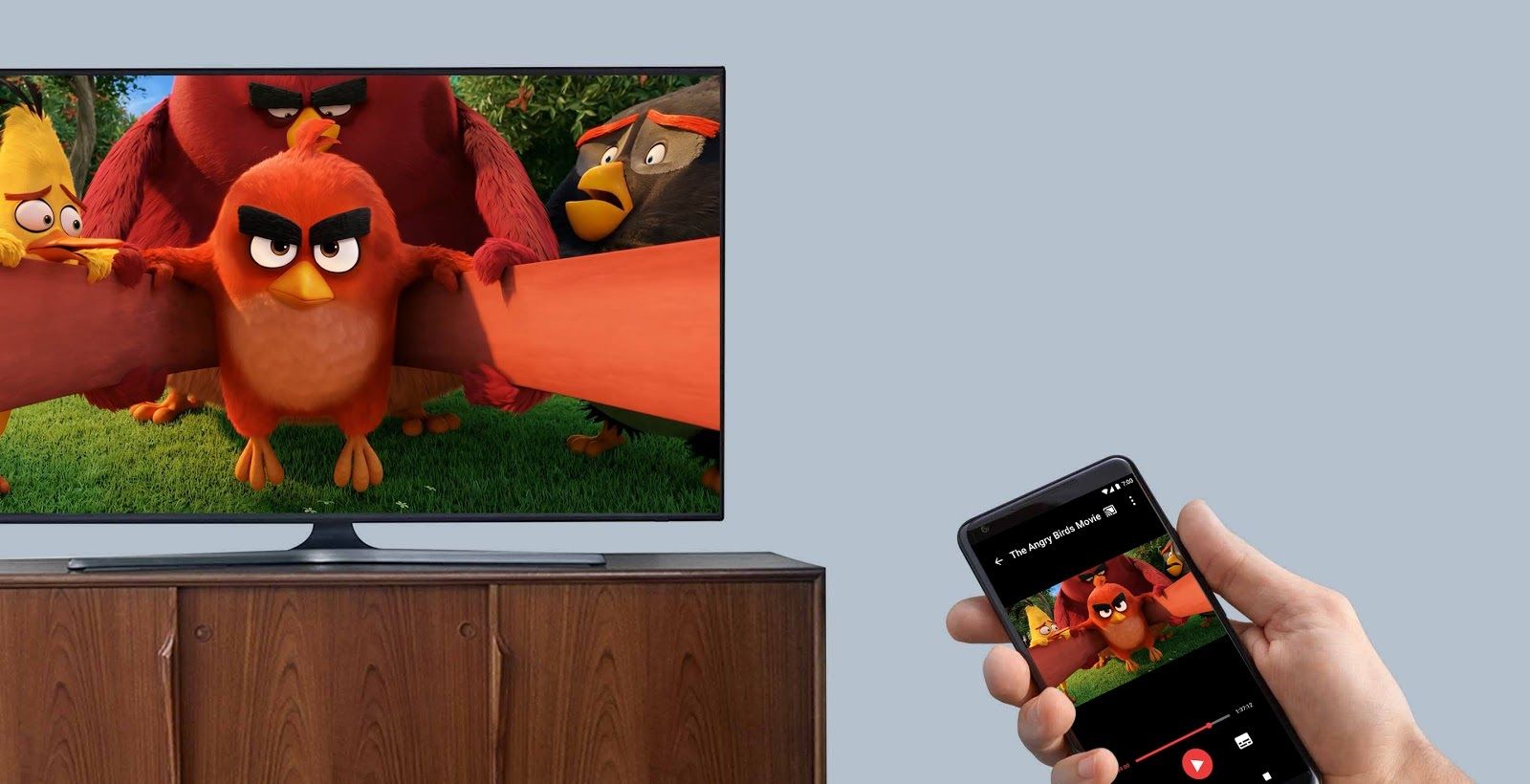Introduction
Connecting your laptop to a Samsung Smart TV opens up a whole new world of possibilities. By using Wi-Fi Direct, you can easily share and stream content wirelessly from your laptop to the big screen. Whether you want to watch movies, view photos, or give presentations, this convenient feature allows you to do it with just a few simple steps.
Wi-Fi Direct is a technology that enables devices to connect to each other wirelessly, without the need for a traditional Wi-Fi network. Instead, it creates a direct connection between your laptop and the Samsung Smart TV, allowing for fast and secure data transfer. This means that even if you don’t have access to a Wi-Fi network, you can still enjoy the benefits of screen mirroring and content sharing.
In this guide, we will walk you through the process of connecting your laptop to a Samsung Smart TV using Wi-Fi Direct. We will provide step-by-step instructions, along with some troubleshooting tips to help you overcome any obstacles along the way.
Before we begin, it’s important to note that the steps may vary slightly depending on the specific model of your Samsung Smart TV and the operating system of your laptop. However, the general process remains the same, so you should be able to adapt these instructions to suit your particular setup.
Now, let’s dive into the world of Wi-Fi Direct and discover how you can connect your laptop to a Samsung Smart TV wirelessly. Get ready to enjoy a seamless multimedia experience and take your entertainment to the next level.
What is Wi-Fi Direct and how does it work?
Wi-Fi Direct is a wireless technology that allows devices to connect and communicate with each other directly, without the need for a traditional Wi-Fi network or an internet connection. It provides a convenient way to share and transfer data between devices, such as laptops, smartphones, and smart TVs.
Unlike other wireless connectivity options, Wi-Fi Direct creates a direct connection between devices, forming a peer-to-peer network. This means that one device acts as a host or access point, while the other devices connect to it. In the case of connecting a laptop to a Samsung Smart TV, the TV acts as the host while the laptop connects to it.
How does Wi-Fi Direct work? When you enable Wi-Fi Direct on your Samsung Smart TV and laptop, both devices search for nearby compatible devices. Once they find each other, they will establish a secure connection using Wi-Fi Direct. This connection allows for seamless communication and data transfer between the two devices.
Wi-Fi Direct operates on the same frequency band as regular Wi-Fi (2.4 GHz or 5 GHz), but it uses different channels. This ensures that Wi-Fi Direct connections do not interfere with existing Wi-Fi networks. It also offers higher data transfer speeds and better range compared to other wireless technologies like Bluetooth.
One of the main advantages of Wi-Fi Direct is its simplicity and ease of use. It eliminates the need for additional hardware or complex setup procedures. All you need is a compatible device with Wi-Fi Direct support, such as a laptop and a Samsung Smart TV.
By utilizing Wi-Fi Direct, you can effortlessly connect your laptop to a Samsung Smart TV, enabling you to stream content, mirror your display, or even use your TV as a secondary monitor. It opens up a world of possibilities for entertainment, productivity, and collaboration.
In the next sections, we will guide you through the process of enabling Wi-Fi Direct on your Samsung Smart TV and laptop, as well as the steps to connect them together. Keep reading to learn how to harness the power of Wi-Fi Direct and enjoy the benefits it brings to your laptop and Samsung Smart TV connectivity.
Step 1: Enable Wi-Fi Direct on your Samsung Smart TV
To connect your laptop to a Samsung Smart TV using Wi-Fi Direct, you first need to ensure that Wi-Fi Direct is enabled on your Smart TV. Here are the steps to do so:
- Turn on your Samsung Smart TV and navigate to the Home screen.
- Using your remote control, locate and select the “Settings” option. It is usually represented by a gear or cog icon.
- In the Settings menu, select the “Network” option. This will open the network settings for your Smart TV.
- Scroll down and find the “Wi-Fi Direct” option. Click on it to access the Wi-Fi Direct settings.
- In the Wi-Fi Direct settings, you will find a toggle switch or an option to enable Wi-Fi Direct. Turn it on.
- Your Samsung Smart TV will now start searching for nearby devices that are compatible with Wi-Fi Direct.
- Once the search is complete, a list of available devices will be displayed on your TV screen.
- Now, you have successfully enabled Wi-Fi Direct on your Samsung Smart TV. Keep your TV in this mode as we move on to the next step.
Enabling Wi-Fi Direct on your Samsung Smart TV is a crucial first step in establishing a connection with your laptop. It allows your TV to act as the host and receive connections from other devices.
Once you have completed this step, it’s time to move on to the next step, which involves enabling Wi-Fi Direct on your laptop. Keep reading to learn how to do it and proceed with the connection process.
Step 2: Enable Wi-Fi Direct on your laptop
After enabling Wi-Fi Direct on your Samsung Smart TV, the next step is to enable Wi-Fi Direct on your laptop. Here’s a guide on how to do it:
- Turn on your laptop and ensure that your Wi-Fi is turned on.
- Open the Wi-Fi settings on your laptop. The method may vary depending on the operating system you are using:
- Windows: Click on the network icon in the system tray, usually located in the bottom-right corner of the screen. In the Wi-Fi section, click on “Wi-Fi Direct” or a similar option.
- Mac: Click on the Wi-Fi icon in the menu bar, typically located in the top-right corner of the screen. From the drop-down menu, select “Wi-Fi Direct” or a similar option.
- Linux: The exact steps may vary depending on the distribution and desktop environment you are using. Look for the Wi-Fi or network settings and locate the Wi-Fi Direct option.
- Once you have accessed the Wi-Fi Direct settings on your laptop, you should see a list of available devices.
- Select your Samsung Smart TV from the list of available devices. The name of your TV should be displayed.
- If prompted, enter a WPS PIN or other authentication code. This step may be necessary for establishing a secure connection between your laptop and Samsung Smart TV.
- After entering the appropriate code or PIN, your laptop will establish a connection to the Samsung Smart TV using Wi-Fi Direct.
- Check that the connection is successful by looking for the Wi-Fi Direct icon or a similar indicator on your laptop’s Wi-Fi settings.
Enabling Wi-Fi Direct on your laptop allows it to establish a direct connection with your Samsung Smart TV, enabling seamless data transfer and screen mirroring. With Wi-Fi Direct enabled on both your laptop and Smart TV, you are now ready to connect them together.
In the next section, we will guide you through the process of connecting your laptop to the Samsung Smart TV using Wi-Fi Direct. Follow along to complete the necessary steps for a successful connection.
Step 3: Connect your laptop to the Samsung Smart TV using Wi-Fi Direct
Now that you have enabled Wi-Fi Direct on both your laptop and Samsung Smart TV, it’s time to establish the connection between the two devices. Follow these steps to connect your laptop to the Smart TV:
- On your laptop, open the display settings. The method may vary depending on the operating system you are using:
- Windows: Right-click on the desktop and select “Display settings” from the context menu. Alternatively, you can go to the Control Panel or Settings app and search for “Display settings”.
- Mac: Click on the Apple menu and select “System Preferences”. In System Preferences, click on “Displays”.
- Linux: The exact steps may vary depending on the distribution and desktop environment you are using. Look for the display settings in the system settings or preferences.
- In the display settings, look for the option to connect to an external display or monitor.
- Select the option to connect to a wireless display or monitor.
- Your laptop will start scanning for available wireless displays.
- Locate and select your Samsung Smart TV from the list of available devices.
- If prompted, confirm the connection on both your laptop and the Smart TV.
- Once the connection is established, your laptop screen will be mirrored on the Samsung Smart TV.
- You can now enjoy streaming videos, playing games, or giving presentations on the big screen through your laptop.
Connecting your laptop to the Samsung Smart TV using Wi-Fi Direct allows you to easily share your screen and enjoy content on a larger display. Whether you want to watch movies, stream videos, or give an important presentation, this connection method provides a seamless and wireless experience.
Make sure to adjust the display settings on your laptop and Smart TV to achieve the desired resolution and aspect ratio. This will ensure an optimal viewing experience on the larger screen.
If you encounter any issues during the connection process, refer to the troubleshooting section in the next step. Otherwise, you are all set to enjoy the benefits of wirelessly connecting your laptop to the Samsung Smart TV.
Step 4: Adjust the settings on your Smart TV for optimal display
After connecting your laptop to the Samsung Smart TV using Wi-Fi Direct, it’s important to adjust the settings on your Smart TV to ensure an optimal display. Here are some settings you can consider tweaking:
- Screen Resolution: Check the screen resolution settings on your Samsung Smart TV. You can usually find this option in the display settings. Make sure the resolution is set to match your laptop’s native resolution or the optimal resolution for the content you’re streaming. This will ensure that the display is clear and sharp.
- Aspect Ratio: Adjust the aspect ratio settings to avoid any black bars or distorted images on the screen. Most laptops use a 16:9 aspect ratio, so setting your Smart TV to the same aspect ratio will generally provide the best results for streaming videos and other content.
- Picture Mode: Experiment with the different picture modes available on your Samsung Smart TV. These modes, such as Movie Mode, Sports Mode, or Game Mode, are designed to enhance the picture quality based on the type of content you’re viewing. Choose the mode that suits your preference or the specific content you’re watching.
- Brightness and Contrast: Adjust the brightness and contrast settings to achieve a balanced and pleasing picture. This will ensure that the colors are vibrant and the details are visible without being too bright or washed out.
- Audio Settings: While this step focuses on the display, don’t forget to check the audio settings as well. Depending on your preference, you may want to adjust the volume, bass, treble, or enable any additional sound features provided by your Samsung Smart TV.
By adjusting these settings, you can tailor the display on your Samsung Smart TV to your liking and ensure an immersive and enjoyable viewing experience while using Wi-Fi Direct to connect your laptop.
It’s worth noting that the exact steps and available settings may vary depending on the model of your Samsung Smart TV. Consult your TV’s user manual or the manufacturer’s website for more detailed instructions on adjusting the display settings.
Now that you’ve fine-tuned your Smart TV’s display settings, you’re ready to fully enjoy your multimedia content on the big screen. Whether you’re streaming movies, watching videos, or giving presentations, the optimized settings will enhance your viewing experience and make it even more engaging.
Step 5: Troubleshooting common issues
While connecting your laptop to a Samsung Smart TV using Wi-Fi Direct is generally a straightforward process, you may encounter some common issues along the way. Here are some troubleshooting tips to help you overcome these obstacles:
- Connection Not Found: If your laptop or Samsung Smart TV is not detecting the Wi-Fi Direct connection, ensure that both devices are in close proximity to each other. Make sure that Wi-Fi Direct is enabled on both devices and try scanning for connections again. Restarting both devices can also help resolve connectivity issues.
- Authentication Failure: If you encounter an authentication failure during the connection process, double-check that you entered the correct WPS PIN or authentication code on both your laptop and Smart TV. If the issue persists, try resetting the Wi-Fi Direct settings on both devices and start the connection process again.
- Interference: In some cases, interference from other devices or wireless signals nearby can disrupt the Wi-Fi Direct connection. Move your laptop and Smart TV away from other devices such as routers, cordless phones, and microwaves. This can help minimize interference and improve the stability of the connection.
- Update Firmware: Keep both your laptop’s operating system and your Samsung Smart TV’s firmware up to date. Manufacturers often release updates to improve compatibility and fix bugs that can affect Wi-Fi Direct connections. Check for updates and install them if available to ensure a smoother experience.
- Quality and Lag: If you experience a lag or lower quality display while using Wi-Fi Direct, it may be due to insufficient Wi-Fi signal strength or limitations of the Wi-Fi Direct technology. Try moving closer to the Smart TV and ensure that there are no obstacles blocking the wireless connection. To enhance performance, consider connecting your laptop and Smart TV to the same Wi-Fi network if possible.
If you continue to experience issues despite troubleshooting, consult the user manual of your laptop and the support documentation provided by Samsung for your Smart TV. They may have specific troubleshooting steps or additional recommendations to resolve any persistent problems.
By following these troubleshooting tips, you’ll be better equipped to tackle common issues that may arise when connecting your laptop to a Samsung Smart TV using Wi-Fi Direct.
Now that you’re armed with the knowledge to resolve potential problems, go ahead and enjoy the seamless wireless connectivity between your laptop and Samsung Smart TV.
Conclusion
Connecting your laptop to a Samsung Smart TV using Wi-Fi Direct opens up a world of possibilities for seamless content sharing and screen mirroring. By following the steps outlined in this guide, you can easily establish a wireless connection between the two devices and enjoy your favorite movies, videos, and presentations on the big screen.
Wi-Fi Direct provides a convenient way to connect devices without the need for a traditional Wi-Fi network. It allows for fast and secure data transfer between your laptop and Samsung Smart TV, enhancing your entertainment and productivity experiences.
In this guide, we discussed the process of enabling Wi-Fi Direct on your Samsung Smart TV and laptop, as well as connecting the two devices together. We also provided tips for adjusting the settings on your Smart TV for optimal display and troubleshooting common issues that may arise during the connection process.
Remember to consult the user manuals and support documentation for your specific laptop model and Samsung Smart TV if you encounter any difficulties. These resources can provide you with additional guidance and troubleshooting steps to resolve any persistent issues.
By making use of Wi-Fi Direct, you can enjoy the convenience of wirelessly connecting your laptop to a Samsung Smart TV, transforming your viewing experience and boosting your productivity. Whether you’re streaming movies, giving presentations, or sharing content with family and friends, the possibilities are endless.
Now, it’s time to grab your popcorn and settle in for a fantastic entertainment experience on your Samsung Smart TV, all powered by the wireless connectivity of Wi-Fi Direct.











